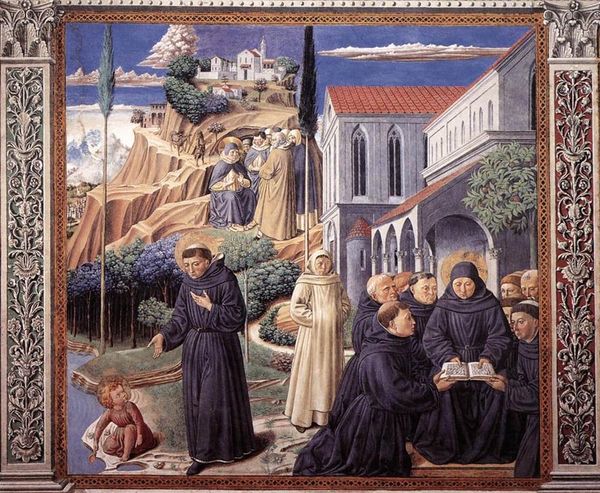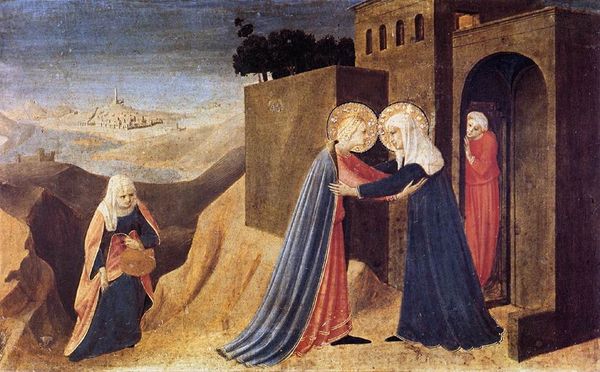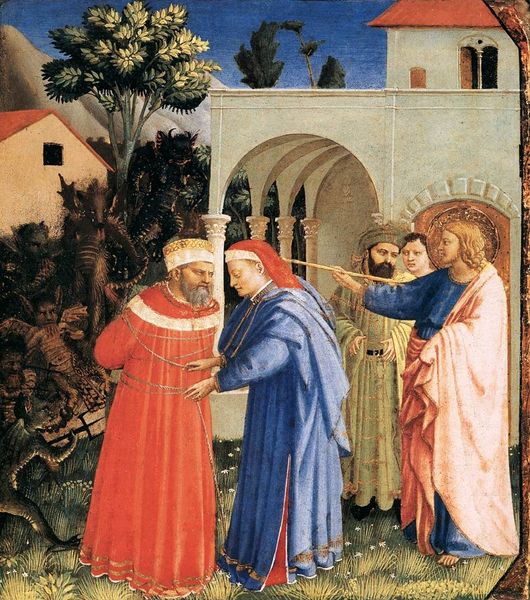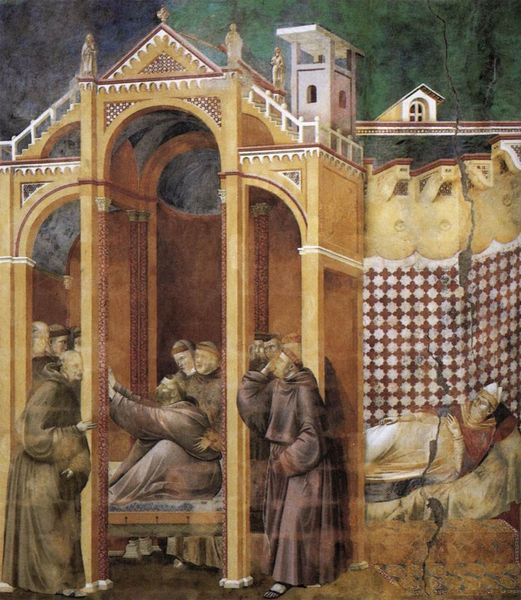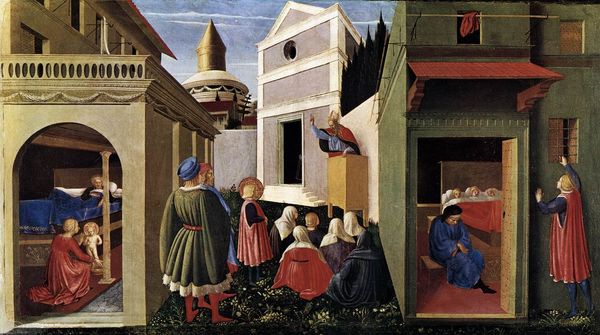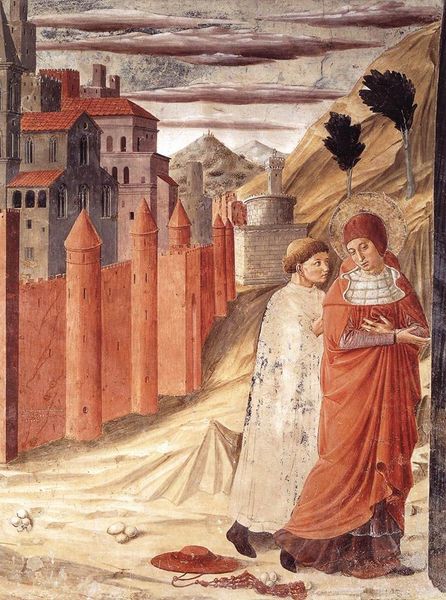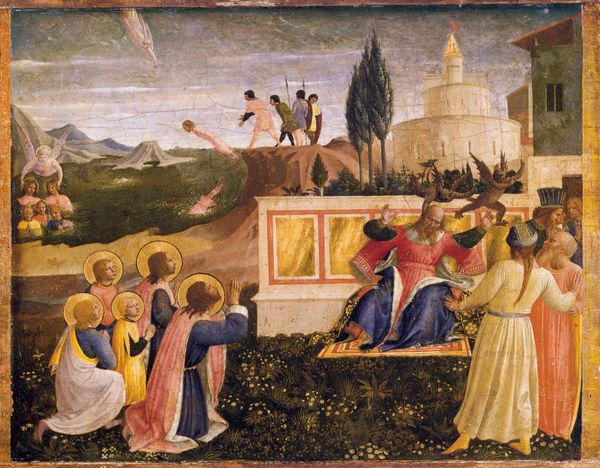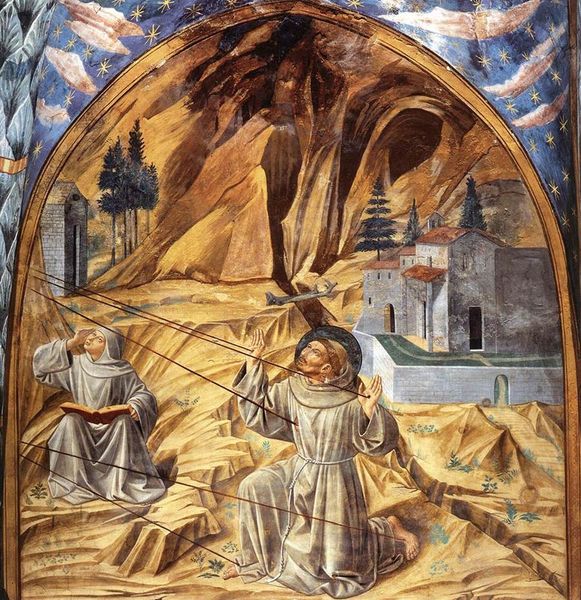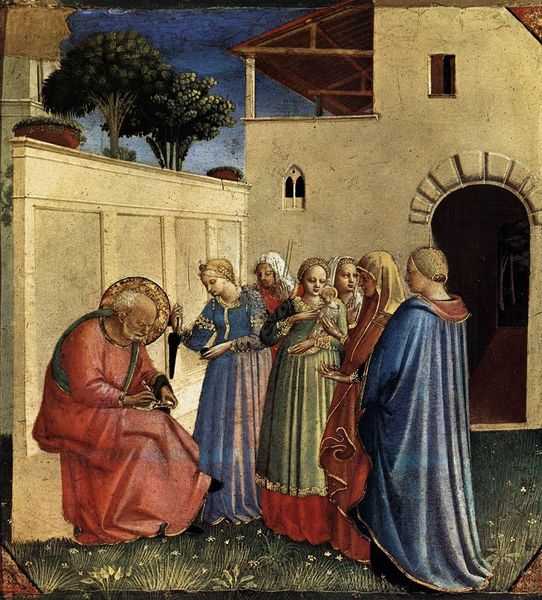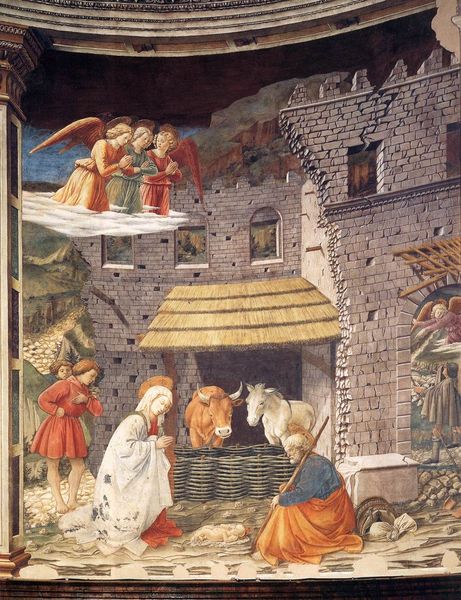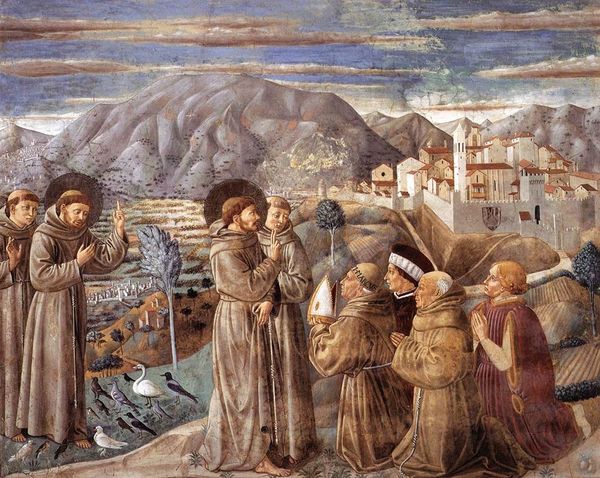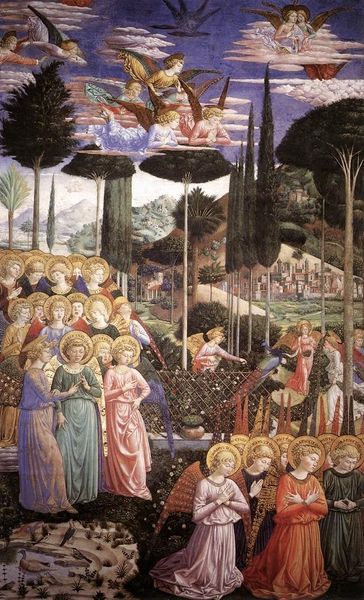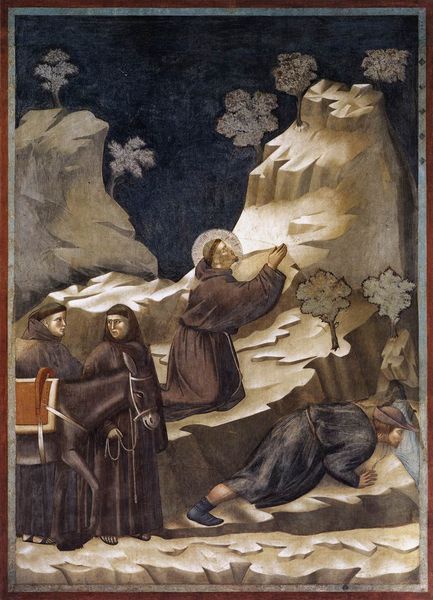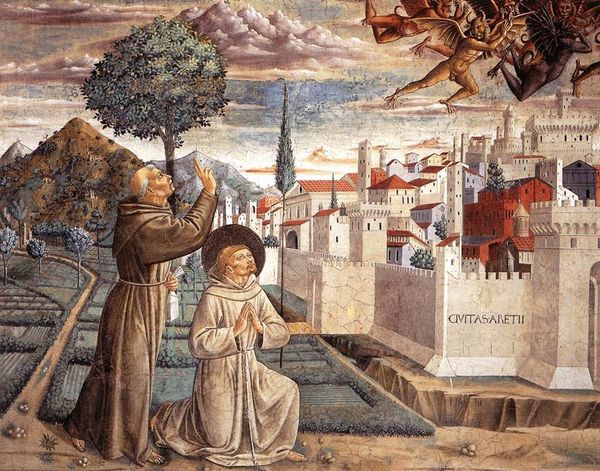
Visit to the Monks of Mount Pisano 1465
0:00
0:00
benozzogozzoli
Sant'Agostino Church, San Gimignano, Italy
painting, fresco
#
portrait
#
narrative-art
#
painting
#
landscape
#
fresco
#
coloured pencil
#
christianity
#
academic-art
#
italian-renaissance
Dimensions: 220 x 230 cm
Copyright: Public domain
Curator: Up next, we have “Visit to the Monks of Mount Pisano” painted as a fresco around 1465 by Benozzo Gozzoli. It is located at the Sant'Agostino Church in San Gimignano, Italy. Editor: My initial reaction is drawn to the understated narrative. It's quite tranquil, and the varied textures Gozzoli achieved with the fresco technique is immediately striking, from the landscape to the clothing. Curator: Indeed. We see Saint Augustine’s journey rendered within a landscape deeply rooted in the material realities of 15th-century Tuscany, which reflected social power, artistic patronage and class divisions. Notice Saint Augustine—a figure of intellectual and spiritual authority— depicted not in isolation, but amongst a community of fellow monks and laity within a specific geographical setting. Editor: The earthy pigments highlight those ties to labor, locality, and process, I agree. We can't ignore the economic aspects embedded here; the raw materials themselves representing a transaction that fuels the workshops that made this artwork possible. Look at the way the lines create those flowing robes! Curator: Exactly. The placement and posture of Saint Augustine subtly challenges dominant hierarchical representations and offers a nuanced reading through lens of power dynamics that were present at the time, considering his gender and identity within the church. The materiality of the landscape isn't merely background, it reinforces Augustine's intellectual pursuits were necessarily linked to a tangible connection with his place within the hierarchy. Editor: Also consider, too, how this fresco interacts with the architecture of the church, a spatial dialogue. How the rough textures of the building become canvas and support the overall composition. What does it mean that it occupies public and sacred space? Curator: And, within that space, this visit is a metaphor for a conversation of ideas and ideals. The painting, as a whole, becomes a site of intersectional encounter. It provides us with ways to reflect on structures and assumptions about community and what a space or structure signifies and who it is constructed for. Editor: Examining “Visit to the Monks of Mount Pisano” beyond its surface representation to unveil these stories of place, materiality, labor, and its intersection with a sacred space adds much value to this visit, literally! Curator: Yes, by considering how these layers interact, we start to engage with the complexities inherent in our shared art histories, particularly as we bring to light themes of gender, class, and identity.
Comments
No comments
Be the first to comment and join the conversation on the ultimate creative platform.
